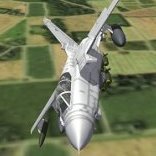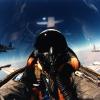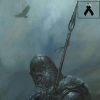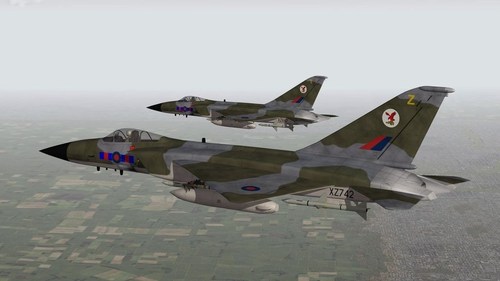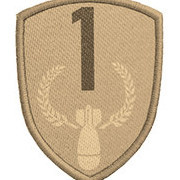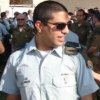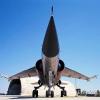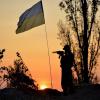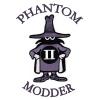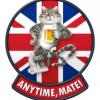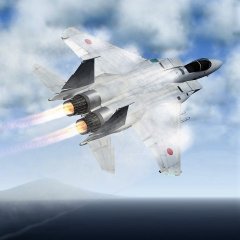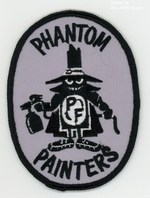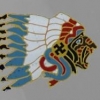Leaderboard
Popular Content
Showing most liked content on 05/05/2020 in all areas
-
10 pointsI was 8 and in Warsaw Pact when they started their duty .. Now I'm 49 and in NATO ... and they are still flying ...
-
7 points
-
5 pointsGoose Bay Intercept, circa 1957 Bears & Beagles...I gave them weapons release, and it turned into a free-for all The only safe way to hunt Bears... Home in time for breakfast....
-
5 pointsAmericans: "THOSE WASPS ARE HUUUUUUUUUUUUUUUUGE AND WILL KILL US ALL!!!!" Australians: "Why are the Yanks losing it over those tiny wasps??"
-
4 pointsAnd if you wonder why nuclear war never happend in Europe .. Tonkas were part of it. Just too dangerous to ignore them. They never weren't same level as Su-17/20/22. Tonka's inertial navigation system was far over any plane of it's time. It's ability for AA defense penetration was just class for it's own. They were our enemies, but I felt in love from 1st Tonka photo I saw ;-) Just amazing, fucking predator !
-
4 points
Version 1.0.0
168 downloads
Panavia Condor F.1 for STRIKE FIGHTERS 2 On July 25th 1968 a memorandum of understanding was signed by Belgium, Canada, Italy, the Netherlands, the UK and West Germany expressing their interest and intent on producing a multi-role combat aircraft (MRCA) with a tentative in-service date of 1975. Belgium dropped out very early and before the end of the year Canada had also pulled out with Prime Minister Pierre Trudeau claiming that they simply could not afford it but this was, perhaps, a convenient excuse to hide behind whilst Trudeau's liberal goverment re-shaped the entire Canadian armed forces. For a short while the remaining four nations ploughed on but the Dutch became increasingly concerned as their prime mission was for an air superiority fighter and even though they had cranked in severe requirements for long radius of action and maximum performance in air combat at all altitudes they then complained when the resultant design became larger and therefore more expensive. Once the Dutch had left the MRCA project the remaining three nations formed a Joint Working Group firming up on requirements, removing excessive demands and establishing a technically viable baseline solution to their MRCA requirement. Fashionably, this baseline solution was a swing-wing design with afterburing turbofan engines. With all three Governments on board the project was to be delivered by a co-ordinating organisation called NAMMO (NATO MRCA Management Organisation) employing three newly created international contractor companies; Panavia Aircraft GmbH (airframe), Turbo-Union Ltd (engines) and Avionica Systems Engineering GmbH (avionics) that would combine to produce the Panavia Tornado. Whilst the RAF were fully behind the swing-wing MRCA design for their all-weather interdiction and strike requirements they expressed deep concern over it's suitability to meet their RAF Air Staff Requirement 395 which called for a long-range interceptor to replace the Lightning and Phantom. Influenced by U.S. studies on future air superiority fighter aircraft, and especially by John Boyd's energy–maneuverability theory, the RAF demanded an aircraft with extra power and maneuverability compared to the proposed Tornado ADV. Whilst they conceded that the Tornado ADV might be acceptable as a long-range interceptor it would be totally outclassed as a 'central front' fighter by the expected threats of the next generation of Soviet fighter aircraft (in particular, and before it's limitations became known, the MiG-25 was especially feared). When the UK Government argued that another combat aircraft could not be considered on cost grounds the RAF reminded them that the proposed Tornado ADV was already morphing into a different aircraft with a longer forward fuselage to accommodate semi-recessed Sparrow/Skyflash missiles, more powerful engines to address the low power to weight ratio and a totally different avionics package. Panavia were already ahead of the curve with several design studies on various advanced air superiority fighter aircraft with the most promising being 'Projekt Condor' from the Messerschmitt-Bölkow-Blohm (MBB) design team at Ottobrun for a single-seat air superiority fighter powered by a single large afterburning turbofan engine (the RB.250 - itself a paper project by Turbo-Union but based on a scaled-up Rolls-Royce Spey turbofan). Preliminary technical studies demonstrated that Specific Excess Power and manoueverability were off the chart when compared to all current fighter aircraft and a parallel study on the market for such an aircraft in the 1975 to 1990 period revealed a potential market for 600 aircraft in Western Europe and the Middle East alone. Unexpected support for Projekt Condor came from the Italian Government who sought a follow-on fighter aircraft to replace the Aeritalia F-104S on the Turin production line. In the UK, with unemployment at its highest level since 1940, the incoming Conservative Government led by Edward Heath supported the project as one of a raft measures to boost the UK economy. By 1971 all three Governments (Italy, the UK and West Germany) were in agreement and the Panavia Condor programme was allowed to proceed with an initial order for 10 Condor prototype and development aircraft and 465 production aircraft (West Germany 200, UK 165 and Italy 100) to be assembled on final production lines in each country but with workload shared out with the United Kingdom and West Germany each having a 40% share of the workload with the remaining 20% going to Italy. With inflation running rampant in Western Europe the Condor programme was under the strictest financial scrutiny during the early 1970's but luckily escaped the axe on at least two occassions. Despite the Condor programme being a political football (and seemingly a permanent fixture in the news headlines) development moved swiftly aided by the existing collaborative structures within Panavia recently created for the Tornado programme. With a new airframe and a new engine Panavia were keen to avoid also introducing a completely new avionics package so sensibly opted for an off-the-shelf purchase of the Hughes APG-63 multimode radar system but designed to incorporate a software programmable signal processor allowing the system to be modified to accommodate new modes and weapons through software reprogramming rather than by a more costly and disruptive hardware retrofit. The first prototype (PC-01) was structurally complete by early April 1974 and was trucked from Ottobrun to the Hannover Air Show where it was displayed in the static park attracting considerable interest from Saudi Arabian and Omani officials. DA-01 was then taken to Manching to be mated with the Turbo-Union RB.250 engine for ground-testing and taxying trials that continued during the summer months before MBB's chief test pilot, Nils Meister, took to the air on August 15th 1974. A few short weeks later he dazzled the crowds at the 1974 Farnborough Air Show demonstrating the Condor's remarkable manoueverability. The fleet of development aircraft began to build up during 1975 with the only real mishap occuring when DA-06 (whose main task was armament development) was mysteriously lost over the Irish Sea. Entering service with No.23 Squadron of the Royal Air Force on April 1st, 1978 the Condor F.1 eventually served with seven squadrons in the UK and another two in RAF Germany. Primary armament was the Skyflash semi-active radar homing air-to-air missile and the AIM-9L 'all-aspect' version of the Sidewinder infra-red air-to-air missile. In addition, the Condor was fitted with two internal Mauser BK-27 cannon (developed for the Panavia Tornado) each with 250 rounds. INSTRUCTIONS 1. From the AIRCRAFT folder drag and drop the CondorF1 folder into your Aircraft folder. 2. From the DECALS folder drag and drop the CondorF1 folder into your Decals folder. 3. From the GUNS folder drag and drop the BK-27 folder into your Guns folder (you might already have this). CREDITS Thanks to everyone at Cocas Aircraft Factory and especially to Nyghtfall (skins) and Spinners (decals & screens). packing and original read me Spinners Regards Cocas Version 1 - 05/05/2020 -
3 pointsThe F/A-18 Hornet The F/A-18 Hornet is a versatile aircraft capable of taking on a number of tasks, for air to air missions to assault missions you can count on the F/A-18 to get the job done. While this aircraft is vital to carrier operations, it had a lot to prove back in the day when the F-14 Tomcat reigned supreme. As is the story with most aircraft, it was a mixture of politics and finances that ushered in the era for Hornet, Super Hornet, and Growler, which we'll talk about next week. If you recall our F-16 video you may remember the LWF program which helped create the F-16 Viper. Since the Navy needed to save time and money they decided to use portions from the USAF's LWF program and thus the YF-17 become the F-18. The second engine added another level of protection along with other upgrades needed to help the aircraft to become worthy for carrier operations. McDonald Douglass was the primary contractor for the F-18. Northrop Grumman is the secondary contractor and their job is make the components needed to help the F-18 withstand the rigorous carrier operations. However, in the late 90s, Boeing merged with McDonald Douglass and became the primary contractor for this aircraft's production. Northrop Grumman is still doing their part. I wanted to have that written because I don't think it was 100% clear in this video. Speaking of the video I hope you all enjoy it and, as always, I look forward to knowing your thoughts about the aircraft. As you know, CombatACE, strives to spread the joy of aviation and we have a lot of talented mod authors here that have gone through great lengths to create the outstanding aircraft models that are free for interested ones to download and use with their copies of Strike Fighters. More F-18s here: https://combatace.com/files/category/667-f-18/
-
3 points
-
3 points
-
3 points
-
3 pointsYou are all wrong. They are JAPANESE hornets ... so only Godzilla ...
-
3 pointsDaily Screenshot Challenge - Day 2 Theme - Soviet-Afghan War MiG-23's on a CAS mission over Afghanistan..
-
3 pointsWe're nearly there gentlemen.. I'll try to put a small update log together later this week.. so much terrific work has been done by the team! Baffmeister has been brilliant; putting the final touches on his F-5a flight model, Crusader has been responsible for much of the avionics work ..(more on that later!) and ofcourse, RavenClaw; who has made the RF-5a model possible (which I have to admit I'd failed on numerous attempts!) Currently been focused on completing the textures on the first release pack which will feature Hellenic Air Force liveries from the 60s to the 90s.. pretty close, I think.. and 1 more.. Regards, Sophocles
-
2 pointsThe tactics for combat missions in manpad infested areas is following: Before you enter the area where manpads are suspected, you should start to drop flares. Every 4 or 5 seconds one. Continue this procedure till you leave the suspected area. Since range and maximum altitude of manpads are known it is easy to avoid their fire distance. And in doubt, drop flares. Better one to much, than one to less.
-
2 pointsesta es una misión simple donde esta el portaaviones en el mapa del Rio de la Plata, no cree ninguna adición al terreno ni nada especial simplemente en el editor de misión cree las escuadras de portaaviones correspondiente .
-
2 pointsGerman Bomber over London Docks. (small picture shows original BoB footage) Screenshot from Battle of Britain 2 "Operation Seelöwe" terrain (WIP)
-
2 points
-
2 pointshmm... along with Crusaders 88 flak reccomendation, may I put forward the IJN 'Beehive" round??? https://en.wikipedia.org/wiki/San_Shiki_(anti-aircraft_shell) There's also this American one I'd never heard of.. https://en.wikipedia.org/wiki/Beehive_anti-personnel_round
-
2 points
-
1 pointWhat caliber weapon is needed to kill these things? I'm thinking a 20 gauge with bird shot. I have a funny feeling that a can of Hot Shot would just piss these Japanese Hornets smooth off. (which by the way these puppies are now in the U.S.)
-
1 pointyes and for example 4 dig counter in cokcpit ini. [RadarAltimeter] Type=RADAR_ALTIMETER CounterNodeFormat=RADalt_dig%d MovementType=ANALOG_COUNTER ValueUnit=FEET represent those 4 nodes linked to one parent mesh. Altimeter_box [144 polys, 160 verts] '03' RADalt_dig1 [20 polys, 40 verts] '21b- Default' RADalt_dig2 [20 polys, 40 verts] '21b- Default' RADalt_dig3 [20 polys, 40 verts] '21b- Default' RADalt_dig4 [20 polys, 40 verts] '21b- Default' important is meshes should have names ended by dig1, dig2 dig3, dig4 last number on counter is dig1 where a higher dig(4/5/6) is the first number on the counter
-
1 point
-
1 pointyou've got an old data ini in the aircraft's folder. If you rename it (xA-7E_Data.ini, for example), the issue will disappear. IF you need the data ini for things like player controlled canopy or folding wings or whatever, you'll have to extract a new one from the Cat files, make the changes to match, and then leave the NEW one replacing the defective one in the aircraft's folder. This is a VERY common problem on older mods
-
1 pointGlad to see some feedback posted. From your comments I feel that you enjoy that mod. @yakarov79 This is a well known issue... Unfortunately gunner can not distinguish between various types of targets. They only fire against every target the missile can track when in range... I wanted to make the system able to launch at longer ranges as there are verified Strela-2 kills against low speed aircrafts flying at 10,000 ft (3000 meters). But increasing the maximum launch range, the target can avoid the missile easier and hit probability decreases dramatically. So we need a good balance between launch range and hit probability. For the time being you can reduce max launch range to 2 km. I think this value is the best we can use. @Nightshade/PR Strela-2 is very effective against Skyhawk. IDF actually lost some Skyhawks from SA-7 missiles between 1969-73. @Stratos As in real life, this system (as every MANPADS) is a nightmare for choppers. Deploy flares as long as you operate within the engagement range. However during testing I have experienced a weird issue... Choppers had higher survival ratio (when hit) compared with aircrafts. For some reason many missiles were hitting the tail rotor without causing significant damage. There were cases when choppers had been hit 2 or 3 times and they were still flyable. Have you experienced something similar? @Gepard Yes... flying very fast and dropping flares are the safest ways to deal with SA-7 since its IR seeker was not designed to counter flares.
-
1 point
-
1 pointView File CAF Condor F.1 Panavia Condor F.1 for STRIKE FIGHTERS 2 On July 25th 1968 a memorandum of understanding was signed by Belgium, Canada, Italy, the Netherlands, the UK and West Germany expressing their interest and intent on producing a multi-role combat aircraft (MRCA) with a tentative in-service date of 1975. Belgium dropped out very early and before the end of the year Canada had also pulled out with Prime Minister Pierre Trudeau claiming that they simply could not afford it but this was, perhaps, a convenient excuse to hide behind whilst Trudeau's liberal goverment re-shaped the entire Canadian armed forces. For a short while the remaining four nations ploughed on but the Dutch became increasingly concerned as their prime mission was for an air superiority fighter and even though they had cranked in severe requirements for long radius of action and maximum performance in air combat at all altitudes they then complained when the resultant design became larger and therefore more expensive. Once the Dutch had left the MRCA project the remaining three nations formed a Joint Working Group firming up on requirements, removing excessive demands and establishing a technically viable baseline solution to their MRCA requirement. Fashionably, this baseline solution was a swing-wing design with afterburing turbofan engines. With all three Governments on board the project was to be delivered by a co-ordinating organisation called NAMMO (NATO MRCA Management Organisation) employing three newly created international contractor companies; Panavia Aircraft GmbH (airframe), Turbo-Union Ltd (engines) and Avionica Systems Engineering GmbH (avionics) that would combine to produce the Panavia Tornado. Whilst the RAF were fully behind the swing-wing MRCA design for their all-weather interdiction and strike requirements they expressed deep concern over it's suitability to meet their RAF Air Staff Requirement 395 which called for a long-range interceptor to replace the Lightning and Phantom. Influenced by U.S. studies on future air superiority fighter aircraft, and especially by John Boyd's energy–maneuverability theory, the RAF demanded an aircraft with extra power and maneuverability compared to the proposed Tornado ADV. Whilst they conceded that the Tornado ADV might be acceptable as a long-range interceptor it would be totally outclassed as a 'central front' fighter by the expected threats of the next generation of Soviet fighter aircraft (in particular, and before it's limitations became known, the MiG-25 was especially feared). When the UK Government argued that another combat aircraft could not be considered on cost grounds the RAF reminded them that the proposed Tornado ADV was already morphing into a different aircraft with a longer forward fuselage to accommodate semi-recessed Sparrow/Skyflash missiles, more powerful engines to address the low power to weight ratio and a totally different avionics package. Panavia were already ahead of the curve with several design studies on various advanced air superiority fighter aircraft with the most promising being 'Projekt Condor' from the Messerschmitt-Bölkow-Blohm (MBB) design team at Ottobrun for a single-seat air superiority fighter powered by a single large afterburning turbofan engine (the RB.250 - itself a paper project by Turbo-Union but based on a scaled-up Rolls-Royce Spey turbofan). Preliminary technical studies demonstrated that Specific Excess Power and manoueverability were off the chart when compared to all current fighter aircraft and a parallel study on the market for such an aircraft in the 1975 to 1990 period revealed a potential market for 600 aircraft in Western Europe and the Middle East alone. Unexpected support for Projekt Condor came from the Italian Government who sought a follow-on fighter aircraft to replace the Aeritalia F-104S on the Turin production line. In the UK, with unemployment at its highest level since 1940, the incoming Conservative Government led by Edward Heath supported the project as one of a raft measures to boost the UK economy. By 1971 all three Governments (Italy, the UK and West Germany) were in agreement and the Panavia Condor programme was allowed to proceed with an initial order for 10 Condor prototype and development aircraft and 465 production aircraft (West Germany 200, UK 165 and Italy 100) to be assembled on final production lines in each country but with workload shared out with the United Kingdom and West Germany each having a 40% share of the workload with the remaining 20% going to Italy. With inflation running rampant in Western Europe the Condor programme was under the strictest financial scrutiny during the early 1970's but luckily escaped the axe on at least two occassions. Despite the Condor programme being a political football (and seemingly a permanent fixture in the news headlines) development moved swiftly aided by the existing collaborative structures within Panavia recently created for the Tornado programme. With a new airframe and a new engine Panavia were keen to avoid also introducing a completely new avionics package so sensibly opted for an off-the-shelf purchase of the Hughes APG-63 multimode radar system but designed to incorporate a software programmable signal processor allowing the system to be modified to accommodate new modes and weapons through software reprogramming rather than by a more costly and disruptive hardware retrofit. The first prototype (PC-01) was structurally complete by early April 1974 and was trucked from Ottobrun to the Hannover Air Show where it was displayed in the static park attracting considerable interest from Saudi Arabian and Omani officials. DA-01 was then taken to Manching to be mated with the Turbo-Union RB.250 engine for ground-testing and taxying trials that continued during the summer months before MBB's chief test pilot, Nils Meister, took to the air on August 15th 1974. A few short weeks later he dazzled the crowds at the 1974 Farnborough Air Show demonstrating the Condor's remarkable manoueverability. The fleet of development aircraft began to build up during 1975 with the only real mishap occuring when DA-06 (whose main task was armament development) was mysteriously lost over the Irish Sea. Entering service with No.23 Squadron of the Royal Air Force on April 1st, 1978 the Condor F.1 eventually served with seven squadrons in the UK and another two in RAF Germany. Primary armament was the Skyflash semi-active radar homing air-to-air missile and the AIM-9L 'all-aspect' version of the Sidewinder infra-red air-to-air missile. In addition, the Condor was fitted with two internal Mauser BK-27 cannon (developed for the Panavia Tornado) each with 250 rounds. INSTRUCTIONS 1. From the AIRCRAFT folder drag and drop the CondorF1 folder into your Aircraft folder. 2. From the DECALS folder drag and drop the CondorF1 folder into your Decals folder. 3. From the GUNS folder drag and drop the BK-27 folder into your Guns folder (you might already have this). CREDITS Thanks to everyone at Cocas Aircraft Factory and especially to Nyghtfall (skins) and Spinners (decals & screens). packing and original read me Spinners Regards Cocas Version 1 - 05/05/2020 Submitter cocas Submitted 05/05/2020 Category What If Hangar
-
1 pointActually there is a Type=OIL_PRESSURE_INDICATOR in the game, not need to be a tachometer, though should work both ways. Probably you already checked but any typing error or numbering doubles or missing number in the section of "Instrument[xxx]="? Pilot is part of the AC .lod or the one that shows from the data.ini? If part of the lod I would arrange the mesh linking so the pit interior could be hidden when in cockpit view through the ac_data.ini. Like bellow: Component[013]=Hide1 [Hide1] ParentComponentName=Nose ModelNodeName=Cockpitinterior ShowFromCockpit=False DamageRating= MassFraction= HasAeroCoefficients=FALSE SystemName[001]=Pilot That analog_counter '0' is for 10000ft? I would try one of these setup [Altimeter10k] Type=PRESSURE_ALTIMETER CounterNodeFormat=counter_alt_%d MovementType=ANALOG_COUNTER ValueUnit=FEET Set[01].Position=0.0 Set[01].Value=0.0 Set[02].Position=360.0 Set[02].Value=100000.0 ---------------------------------------------------- or [Altimeter10k] Type=PRESSURE_ALTIMETER CounterNodeFormat=counter_alt_%d MovementType=ANALOG_COUNTER ValueUnit=FEET Scale=10000
-
1 pointsee what I mean...they look really good in plain metal... also one that inspired my P47N Tiger skin...
-
1 pointYeah,they are part of the model...either check loadout and alter load there or look in data.ini on weaponstation and IIRC remove them from the list as they are set to always show...not got full access to mine so cant advise more...someone will..
-
1 pointMaybe, but this is only the standard F-5a model (completely different to the Netherlands NF-5a or the Norwegian F-5a which will be released progressively after this one). I'd much prefer to get the dedicated models and their cockpits out there before I release a paint-kit). On the other hand, If someone is willing to tackle the skins for a multitide of other operators (Spain, Iran, Jordan, Taiwan, Thailand, Turkey.. using the standard F-5a or RF-5a models, I'll happily oblige!
-
1 pointDeadly for choppers (I use a lot the Hind, so I deploy flares when approaching the target), If you're fast not too much a concern. Sometimes I got hit but not killed and that's very cool.
-
1 point
-
1 pointI say we take off and nuke the entire site from orbit...it's the only way to be sure
-
1 pointOne of the most common missiles launched at me. Somehow easy to avoid if you are fast...but if few appear in area...It is getting harder. Very effective against slower aircraft. The only issue is that often fires at targets at maximum range...so effective shots decrease as it is easy to avoid.
-
1 pointI'm going to say a full exoskeleton and flamethrower are going to be my new gardening attire.
-
1 point
-
1 pointyep, i believe ;) This is my first vehicle so its possible i will need help with ini scripting. or may be not. i dont know yet
-
1 point
-
1 pointNapalm....................Yup Napalm is good , dont wanna go Nuclear on their ass, cos thats probably what caused the buggers to mutate into Waspie hell freaks from Hades in the first place .
-
1 point
-
1 point
-
1 point
-
1 point
-
1 point
-
1 point
-
1 pointA JASDF Hawkeye patrolling the night.... directing a major air battle in Nihon Hitori 2020
-
1 point
-
1 pointCause this topic is about Sukhois, we have recieved a package of new pits for the Fencer, 6 to be more precise. The 3D Master is Yeyeye and this is the result: (It will get a bit fine tuned colours, but this is a real masterpiece! ) I fall emidiatly in love! We also asked him if he is interested in building the Fitter pits
-
1 pointhi all my name is barnesy12 from IL2Freemodding i have been reading this thread with interest as i believe this is the 3D model that i imported into il2 for freemodding with many changes i thought i might post a pic or two to show those interested how it ended up the model now streches to six variants including the A25 shrike would post more pics of the variants but apparently this is all you can upload on a free account i think? cheers Barnesy
-
0 points
Important Information
By using this site, you agree to our Terms of Use, Privacy Policy, and We have placed cookies on your device to help make this website better. You can adjust your cookie settings, otherwise we'll assume you're okay to continue..

